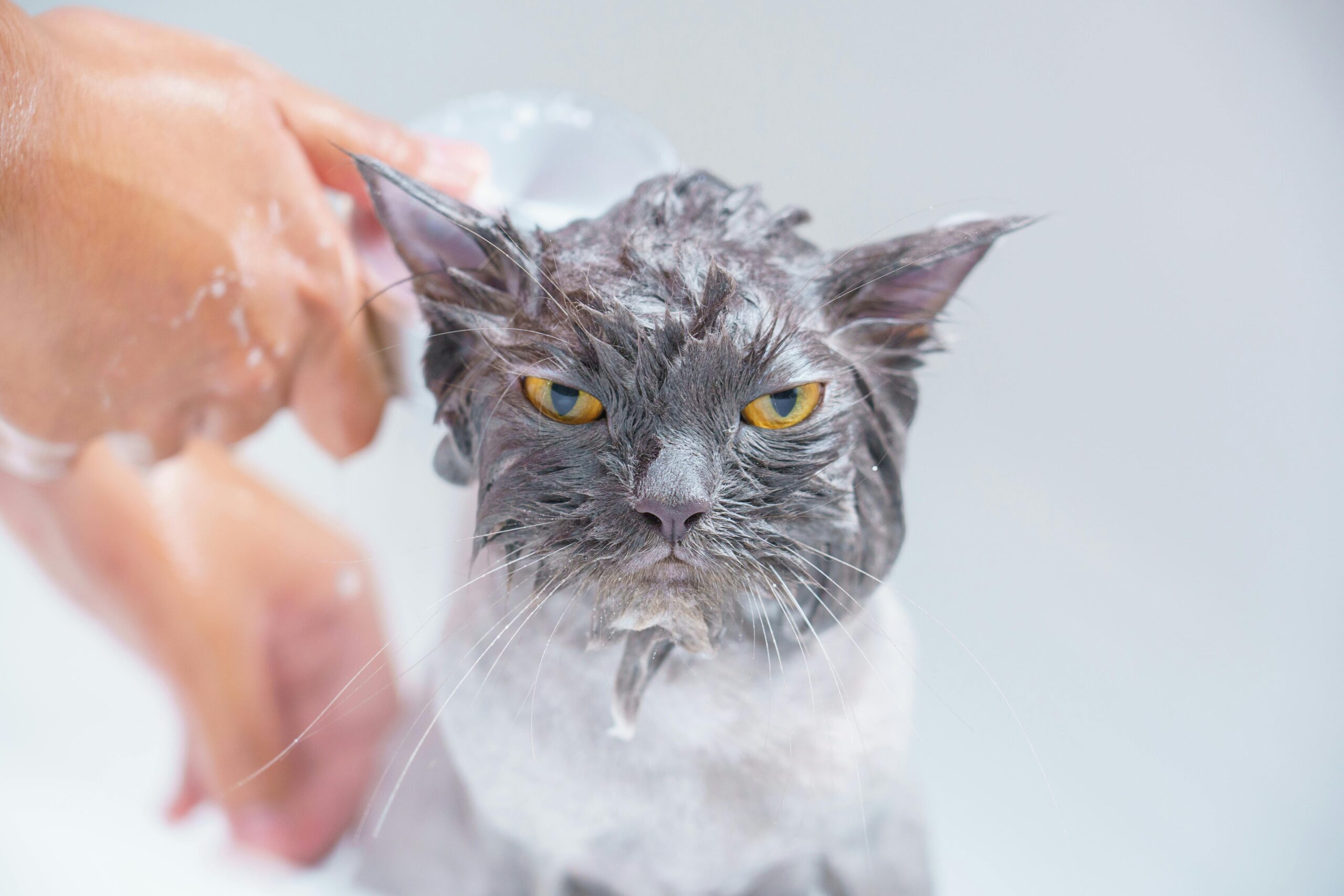Bathing a cat can seem like a daunting task, especially if your feline friend is not particularly fond of water. However, there are times when a bath becomes necessary to maintain your cat’s health and hygiene. Whether it’s due to a messy encounter or a skin condition, knowing how to wash your cat properly can make the process smoother for both you and your pet. This guide will provide you with practical cat bathing tips, essential supplies, and strategies to ensure a stress-free experience for your furry companion.
Introduction to Bathing Your Cat
While cats are known for their grooming habits, there are occasions when they require a little extra help. Understanding when and how to wash your cat can prevent skin issues and keep their coat in top condition. It’s important to approach this task with patience and care, ensuring that both you and your cat remain calm throughout the process.
When to Bathe Your Cat
Determining when your cat needs a bath is key to effective grooming. Here are some signs that indicate your cat might benefit from a bath:
- Noticeable dirt or grime on their coat that they can’t clean themselves.
- Persistent odor that doesn’t dissipate with regular grooming.
- Presence of fleas or other parasites that require a thorough cleanse.
- Skin conditions like allergies or fungal infections that necessitate medicated baths.
- Sticky substances or chemicals on their fur that could be harmful if ingested.
Preparing for the Bath
Proper preparation is crucial for a successful bathing session. Gather all necessary supplies and create a calm environment to ease your cat’s anxiety.
Essential Supplies
- A cat-specific shampoo that is gentle and free from harsh chemicals.
- Several towels for drying and comfort.
- A non-slip mat to prevent slipping in the tub or sink.
- A cup or handheld sprayer for rinsing.
- Brush or comb for pre-bath grooming.
- Treats to reward and soothe your cat during and after the bath.
- Optional: A pet-safe conditioner for extra coat care.
Step-by-Step Guide to Washing Your Cat
Follow these detailed steps to ensure a smooth bathing process:
- Brush your cat thoroughly to remove loose fur and detangle any knots.
- Fill the tub or sink with a few inches of lukewarm water.
- Gently place your cat in the water, speaking softly to keep them calm.
- Wet the fur with a cup or sprayer, avoiding the face and ears.
- Apply the cat shampoo, lathering gently from neck to tail.
- Rinse thoroughly with lukewarm water, ensuring all shampoo is removed.
- Use a towel to pat your cat dry, being gentle around the face and ears.
- Allow your cat to air dry in a warm, draft-free area.
- Brush your cat again to remove any remaining loose fur and prevent tangles.
- Reward your cat with treats and praise for their cooperation.
Tips for Bathing Cats That Hate Water
For cats that are particularly averse to water, consider these strategies to minimize stress:
- Acclimate your cat to water by placing them in an empty tub or sink first.
- Use a damp washcloth to clean areas that don’t require full immersion.
- Play calming music or use pheromone diffusers to create a soothing atmosphere.
- Have a helper gently hold and comfort the cat while you bathe them.
- Keep the bath short and sweet, focusing on essential areas only.
Post-Bath Care
After the bath, it’s important to ensure your cat is comfortable and continues to feel safe. Here are some post-bath grooming tips:
- Check for any signs of skin irritation and address them promptly.
- Brush your cat regularly to maintain their coat and prevent matting.
- Monitor your cat’s behavior to ensure they are not stressed or anxious.
Common Mistakes to Avoid
To ensure a successful bath and a happy cat, steer clear of these common mistakes:
- Using human shampoo or harsh chemicals that can irritate your cat’s skin.
- Forcing your cat into the water, which can increase their fear and resistance.
- Skipping the pre-bath brushing, leading to tangles and matting.
- Neglecting to rinse thoroughly, leaving soap residue that can cause irritation.
- Bathing too frequently, which can strip natural oils from their coat.
- Ignoring signs of stress or discomfort, which can lead to a negative association with bathing.
- Failing to dry your cat properly, which can result in chills or skin issues.
By understanding when to bathe your cat, gathering essential supplies, and following a structured process, you’ll be able to maintain your cat’s hygiene and health effectively. Remember, patience and positive reinforcement are key to ensuring your cat feels safe and secure during bath time.

